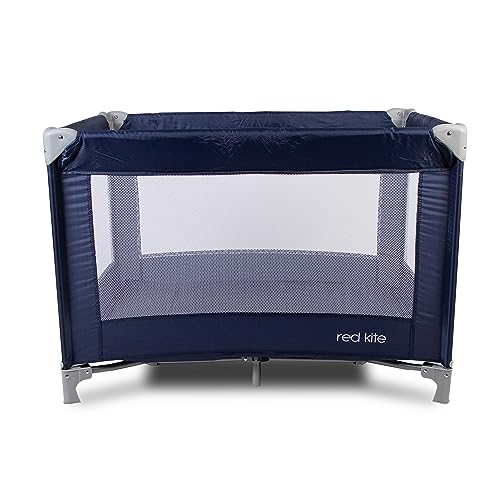online-cots3265
online-cots3265
20 Things You Need To Be Educated About Tots And Cots
Tots and Cots: A Comprehensive Guide for Parents
When it pertains to guaranteeing a safe and comfy sleeping environment for babies and young children, the choices parents make– varying from cribs to cots– can substantially impact their wellness. Today’s article dives deep into the intricacies of picking the very best sleeping plans for tots, emphasizing safety, style, performance, and how these options progress as a child grows.
Understanding Tots and Cots
Tots normally describe children, especially young children aged in between 1 to 3 years, while cots are the sleeping arrangements specifically created for babies and toddlers. The appropriate sleeping devices for this age consists of various kinds of cots, cribs, and toddler beds.
Types of Cots
Numerous designs exist to meet the diverse needs of both parents and children. Below is a list detailing the most typical kinds of cots offered:
-
Standard Crib
- A standard crib is designed for babies and normally includes sides that can be adapted to different heights.
-
Convertible Crib
- This type of crib can transform into a toddler bed, daybed, or full-sized bed as the kid grows, making it a long-term investment.
-
Portable Crib

- Likewise called travel cots, these are lightweight and quickly foldable, ideal for traveling or smaller sized home.
-
Co-Sleeper
- A co-sleeper crib connects to the side of the parents’ bed, enabling for easy access while making sure the baby has a separate and safe sleeping area.
-
Young child Bed
- A toddler bed is a small bed that resembles a standard bed but is developed specifically for young children, normally featuring safety rails.
-
mini cot Beds Crib
- Mini cribs are smaller than basic cribs, making them an excellent choice for tight areas, but they are appropriate for infants only.
Safety Considerations
Guaranteeing security is critical when picking a cot for a child. Here are important safety standards parents ought to consider:
- Check for CPSC Certification: Ensure that the cot adheres to the Consumer Product Safety Commission (CPSC) standards.
- Prevent Drop-Sides: Cots with drop-sides have actually been connected to security hazards, and the current safety guidelines restrict them.
- Utilize a Firm Mattress: A firm bed mattress decreases the threat of suffocation and need to fit comfortably within the cot.
- Keep Bedding Simple: Use a fitted sheet and avoid pillows, comforters, and packed animals that can present suffocation hazards.
- Follow Weight and Age Guidelines: Ensure the child has actually not exceeded the cot’s weight limitation and is still within the recommended age.
Transitioning from a Cot to a Toddler Bed
The transition from a cot to a young child bed can be a psychological milestone for both moms and dads and kids. Here are actions to relieve the shift:
Timing
Choosing when to shift can be subjective, however it’s normally recommended to make the switch between 18 months and 3 years, based upon aspects like:
- Physical Ability: If the child is climbing up out of the cot.
- Potty Training: Consider transitioning if the child is bathroom training and requires much easier gain access to.
- Behavior: Exhibiting signs of maturity, such as following guidelines or expressing a desire for self-reliance.
Tips for Making the Transition Smooth
-
Involve Your Child: Let the child pick their new bed linen or bed decoration to instill excitement about the modification.
-
Keep Routine Consistent: Maintain the kid’s bedtime regimen to offer comfort during this period of modification.
-
Discuss the Change: Discuss the shift to a toddler bed favorably, making it seem like a terrific adventure.
-
Precaution: Place the bed versus the wall or usage bed rails to avoid falling throughout sleep.
Picking the Right Bed
When choosing a toddler bed, moms and dads need to consider elements like:
- Height: Low-profile beds are ideal for young children who may fall out throughout sleep.
- Durability: Ensure the bed can withstand active play as well as sleep.
- Design and style: Choose a style that complements the child’s room and is interesting the kid.
Selecting the best cot for your little one can be a complicated process, however comprehending the options readily available, essential security considerations, and the right timing for transitioning to a toddler bed can make this journey easier for moms and dads. Investing time and effort into these choices will ensure that your kid has a safe, comfy, and nurturing sleep environment.
FAQs
1. What is the difference between a cot and a crib?
- A cot is generally a smaller sized bed designed for younger young children, while a crib is a bigger bed that is typically suitable for babies as much as 3 years of ages.
2. When should I move my kid from a crib to a young child bed?
- The shift time is usually between 18 months and 3 years; this modification is based upon the kid’s physical capabilities and behavioral signs.
3. How can I guarantee my child is safe while sleeping?
- Always adhere to safety standards, utilize a firm mattress with a simple bed linen plan, and keep an eye on the cot’s weight limitation.
4. What should I do if my child attempts to climb up out of the cot?
- If your kid is climbing out, it may be time to consider transitioning to a toddler bed to prevent falls.
5. Can I utilize the same mattress when transitioning?
- Typically, it is best to replace the crib mattress with one that specifies to the young child bed. Ensure it fits snugly and abides by safety requirements.
By considering these elements, parents can design healthy sleep practices and offer their kids with a safe environment that promotes relaxing sleep. Purchasing quality sleeping plans will contribute to the child’s general development and happiness.
